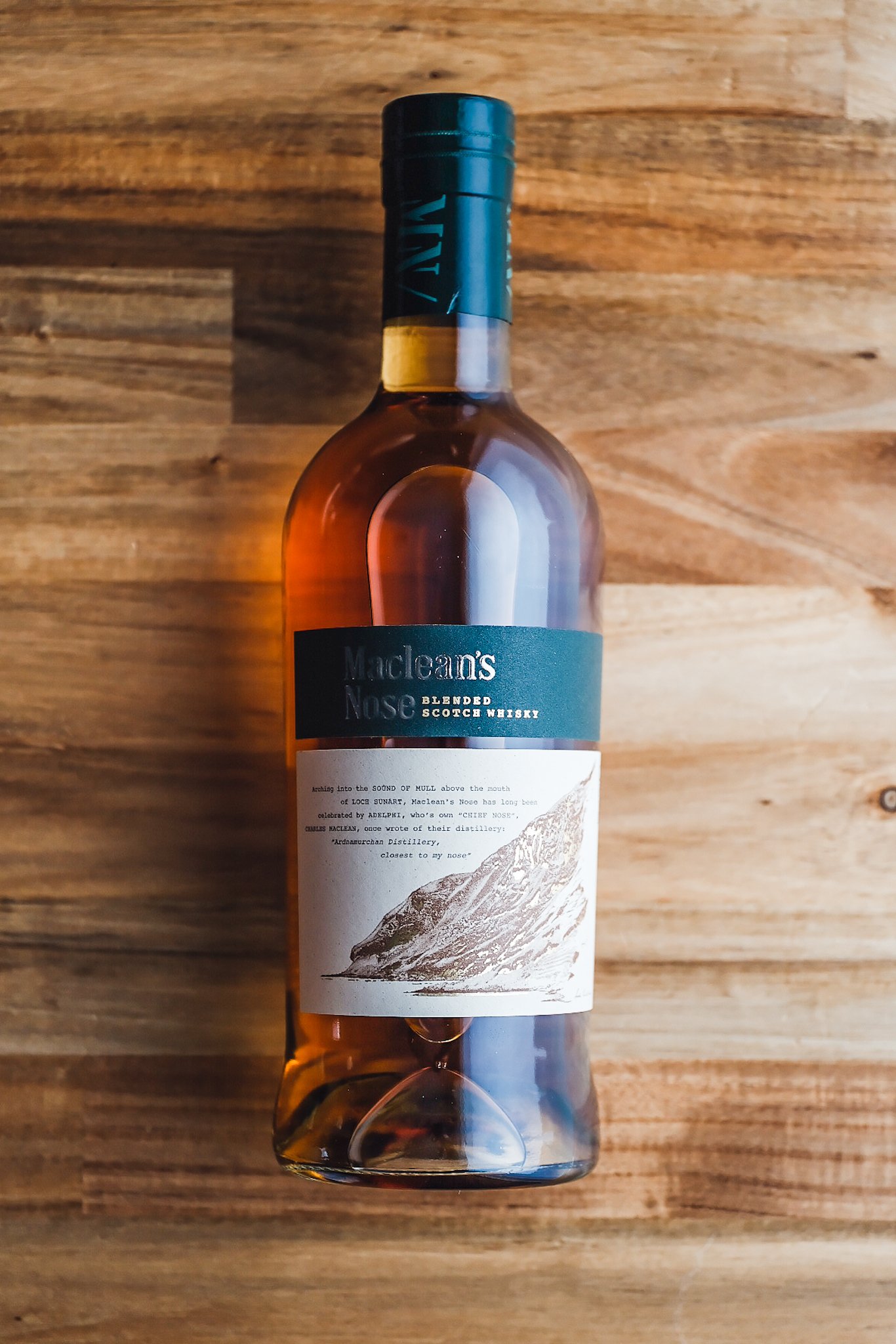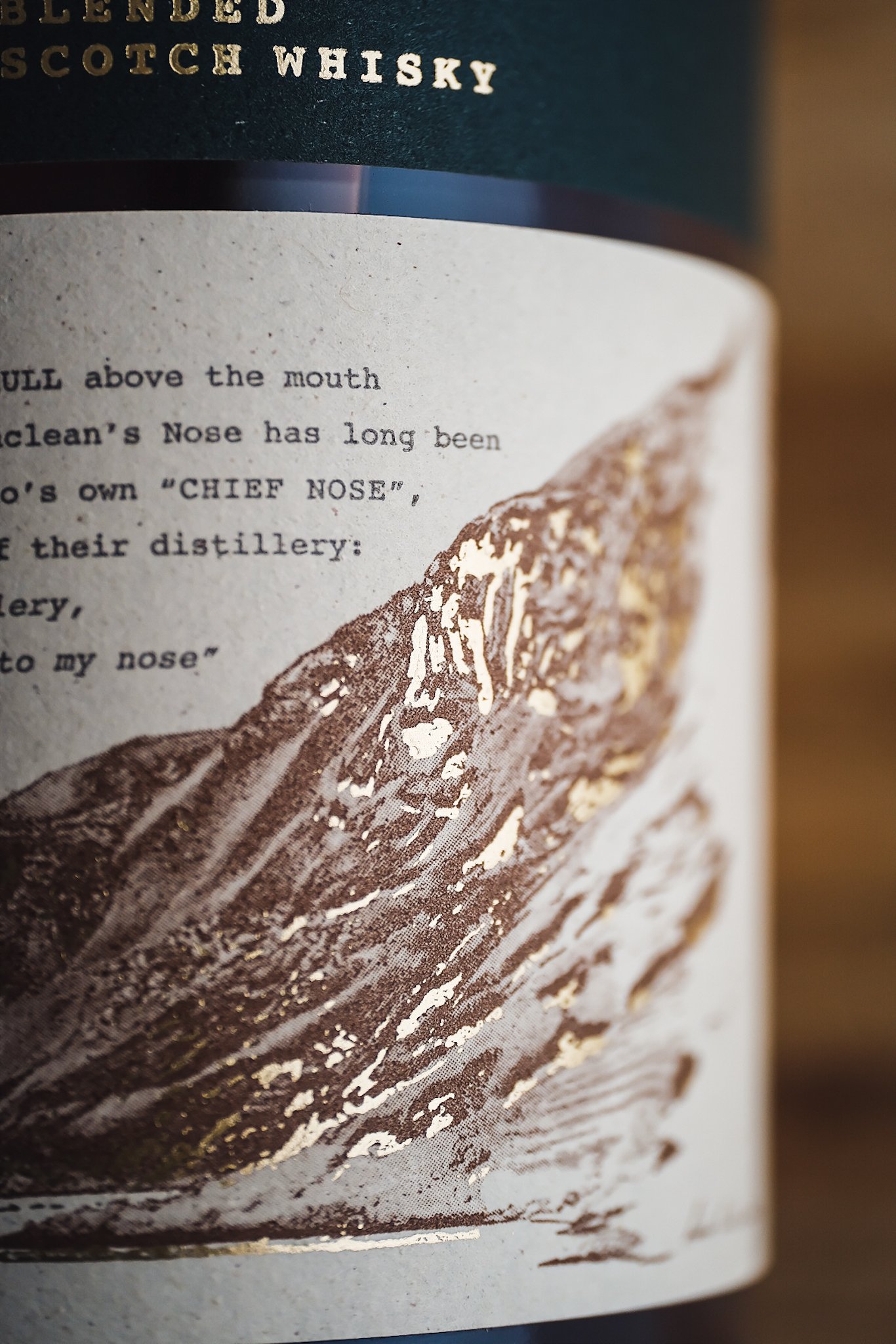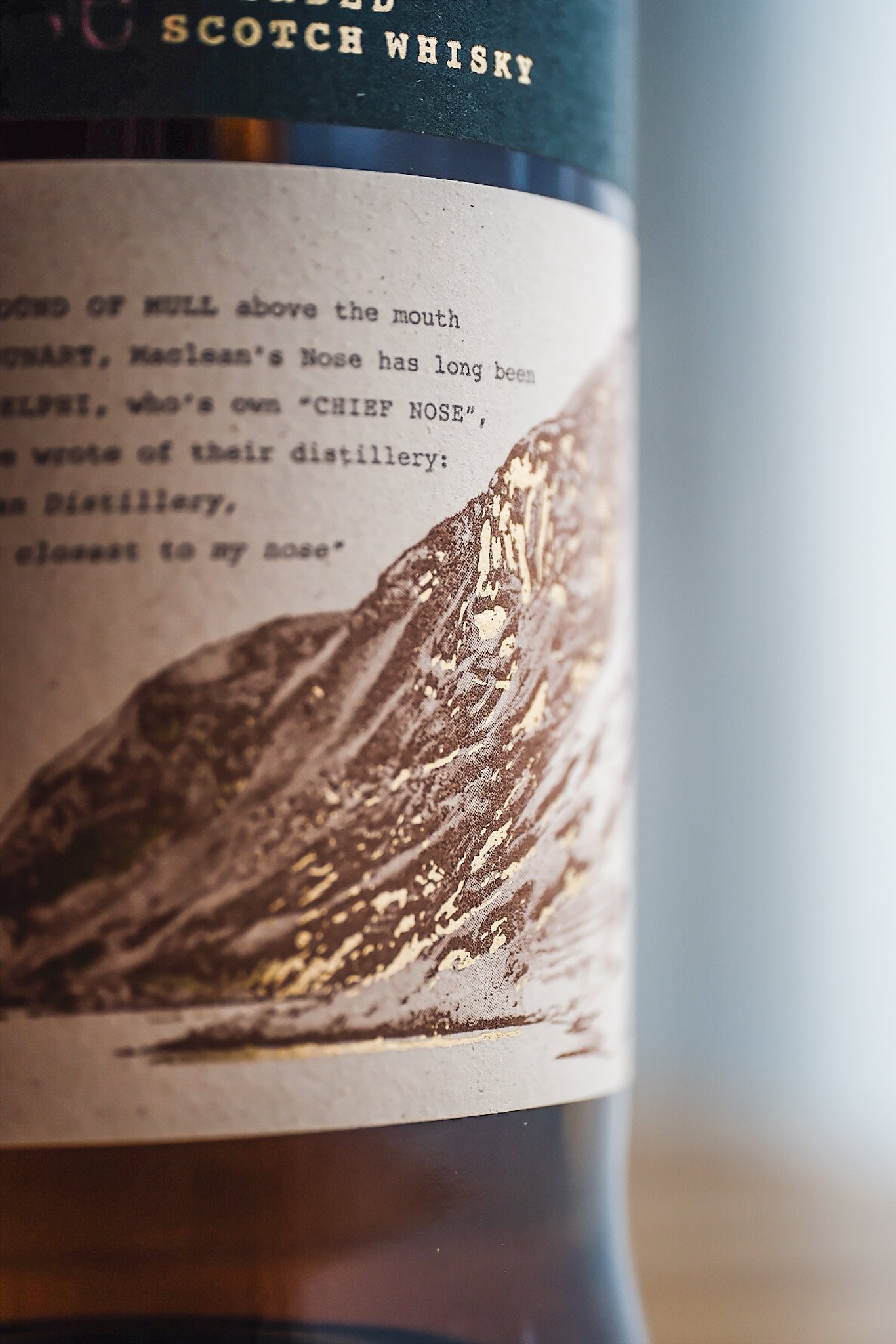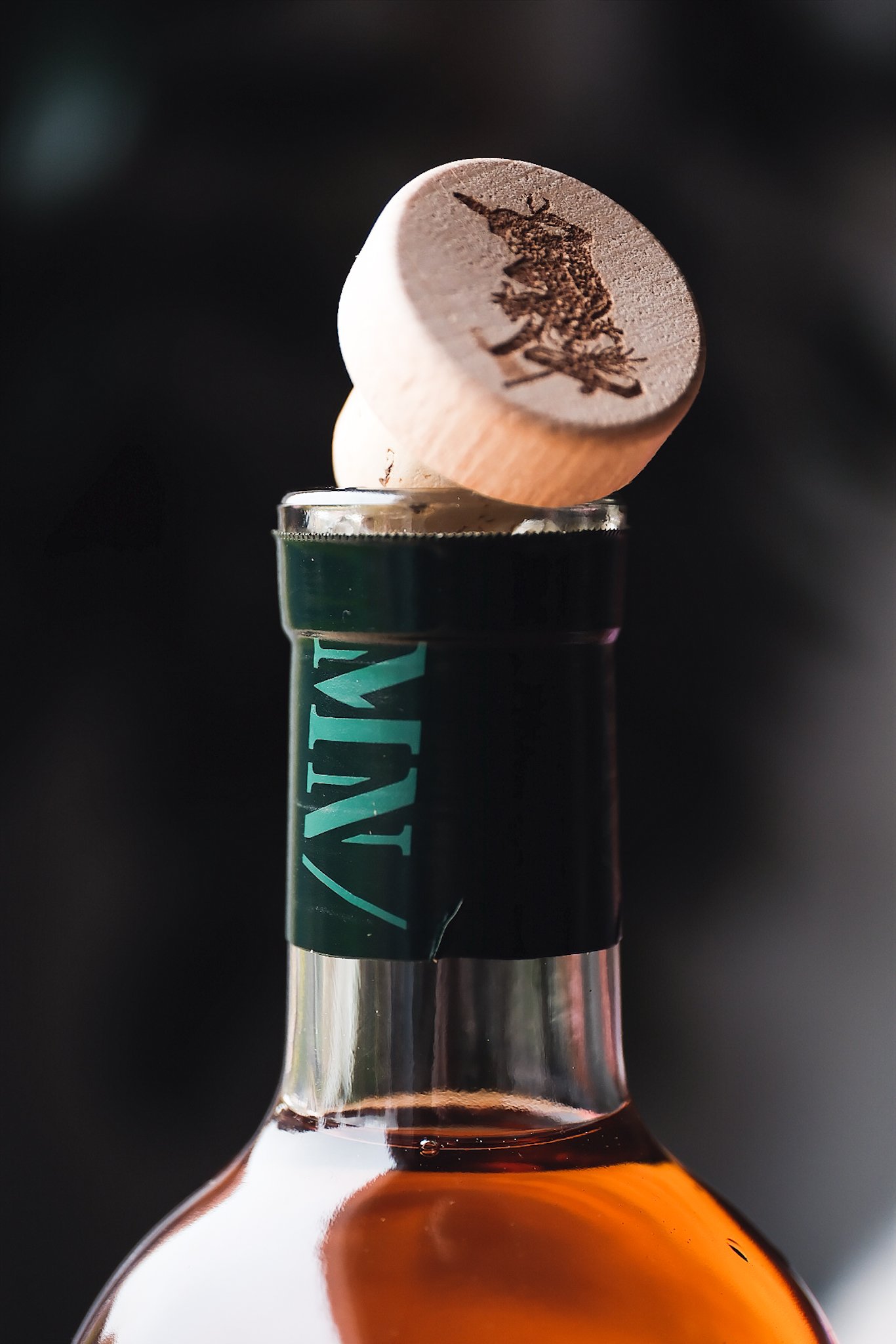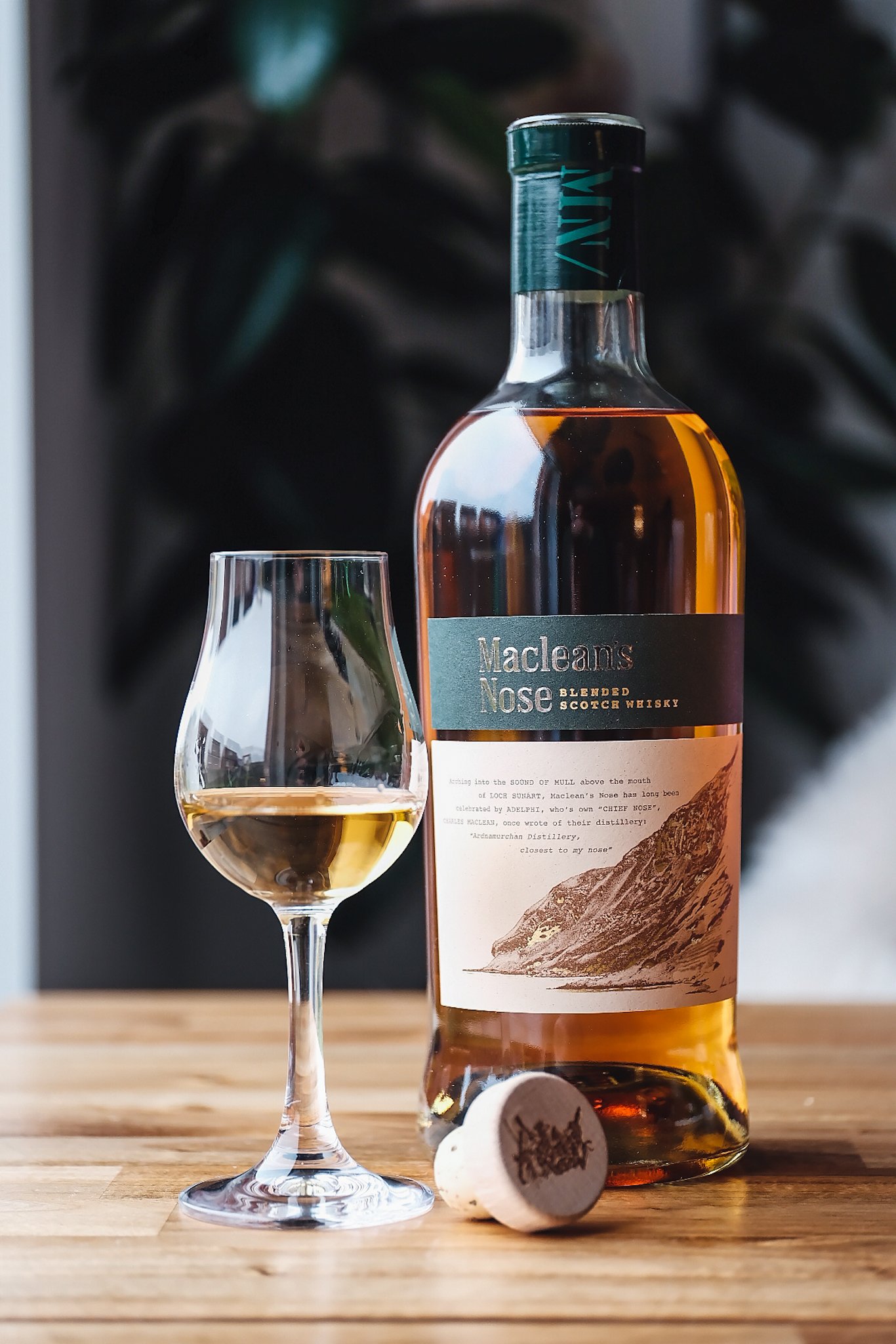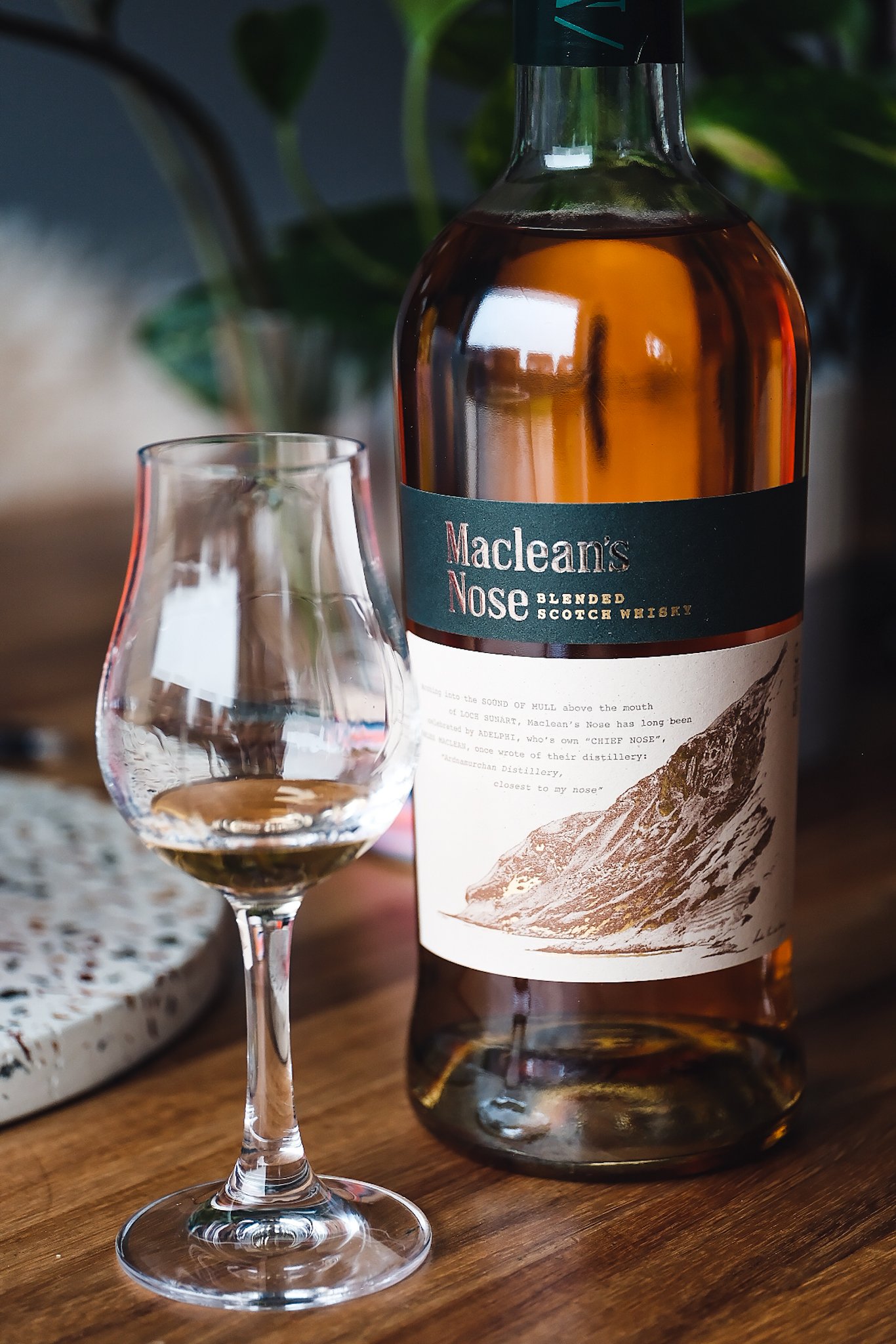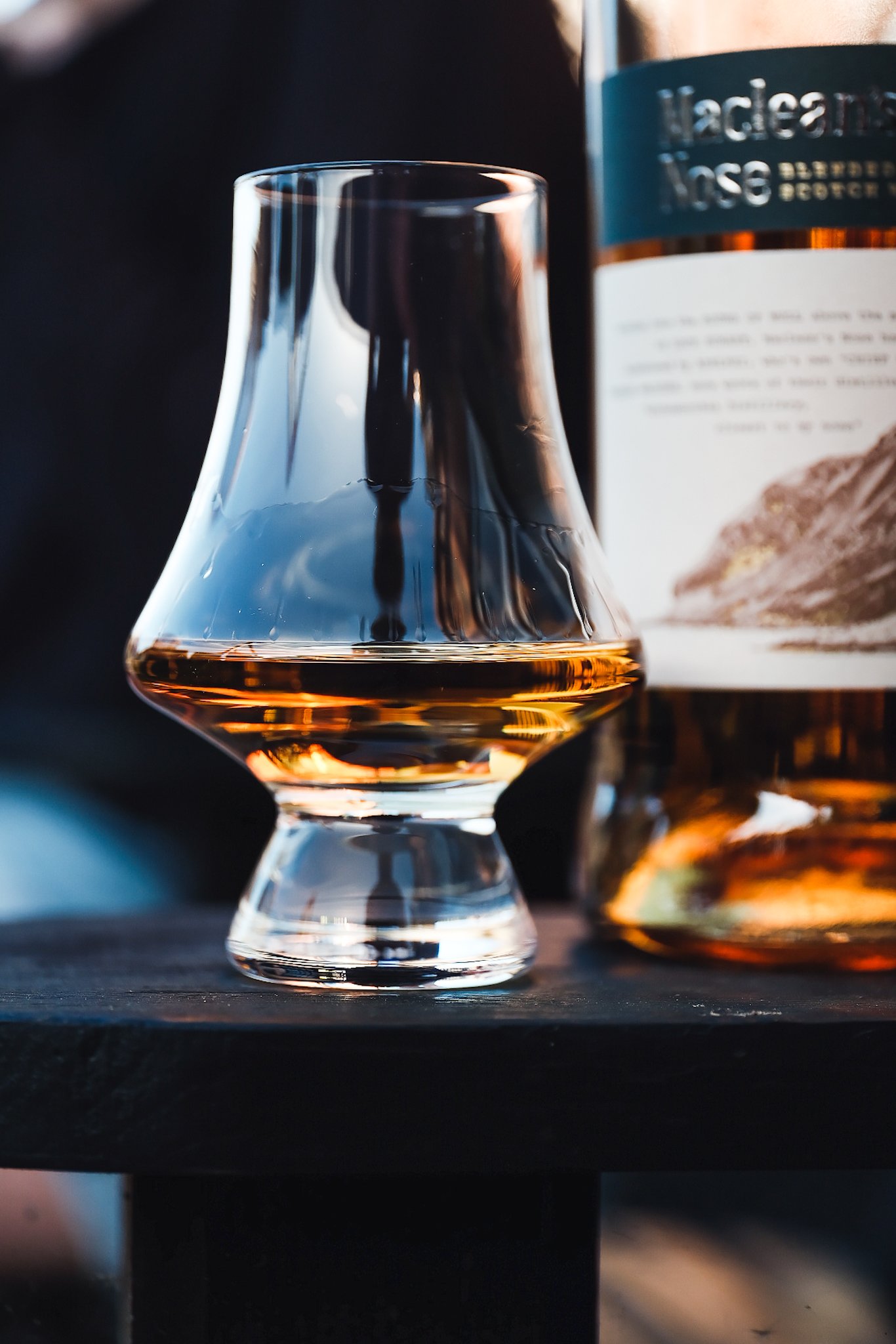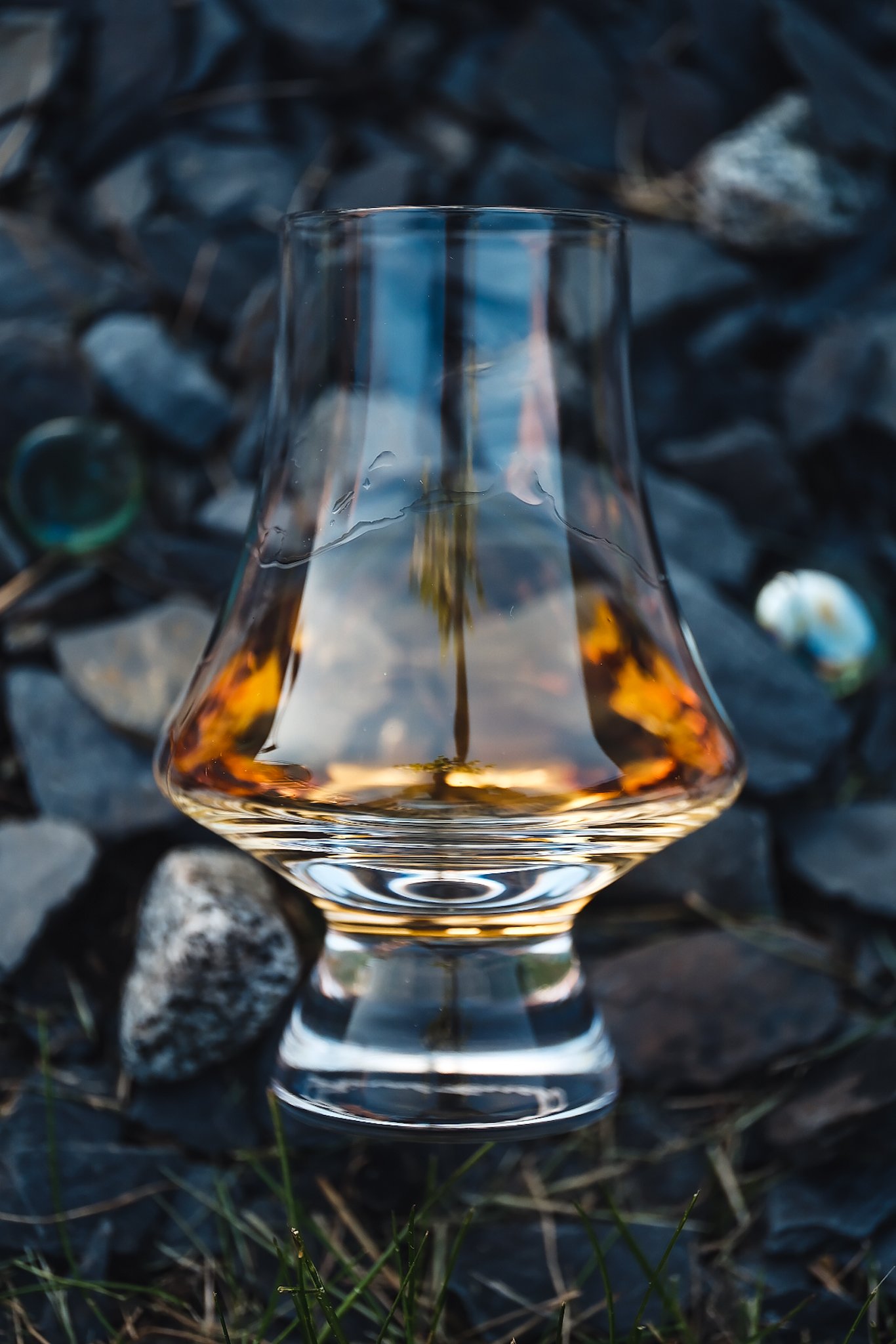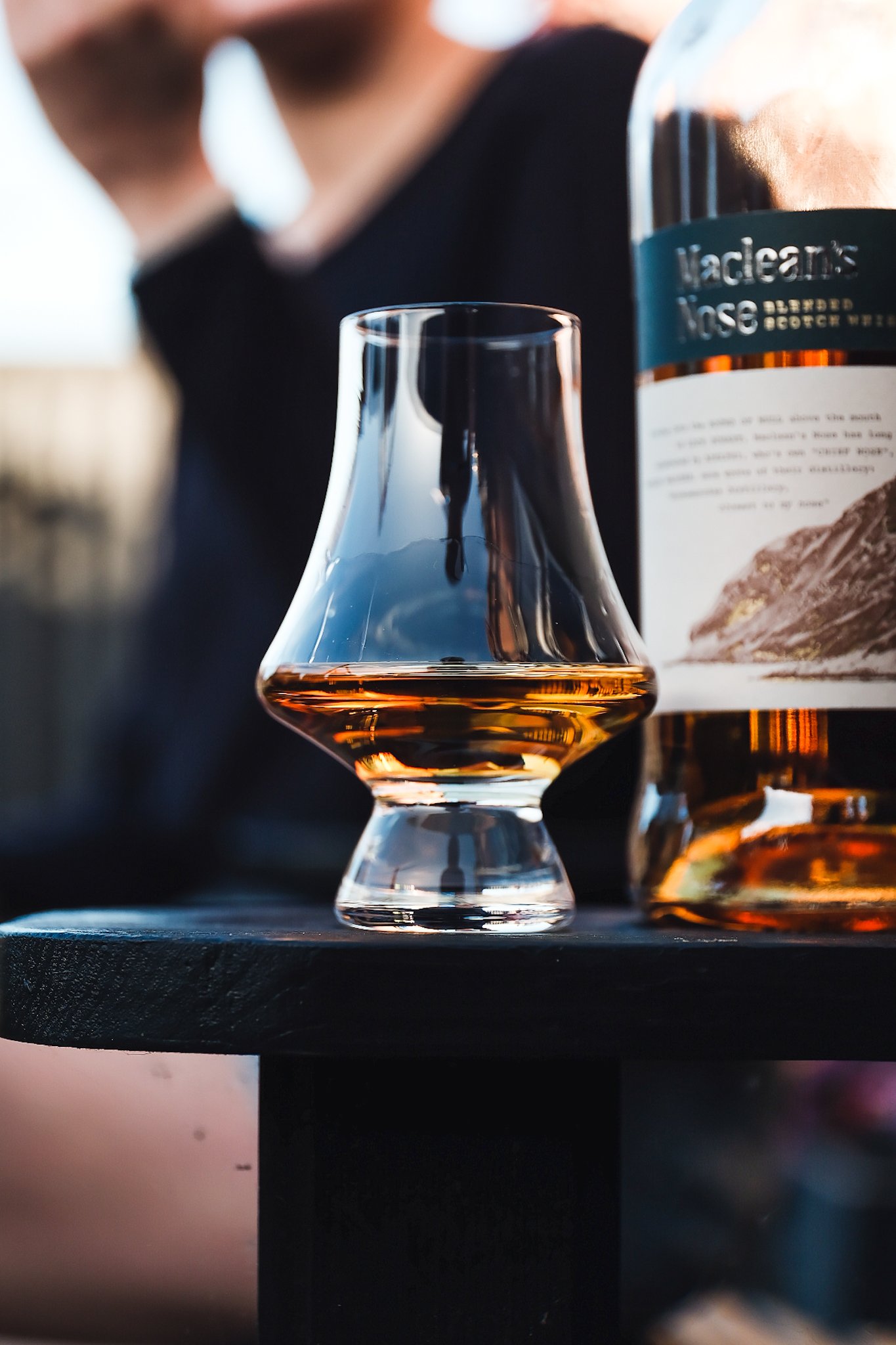Maclean’s Nose
Blended Scotch Whisky | 46% ABV
Score: 7/10
Very Good Indeed.
TL;DR
A truly premium antidote to premiumisation
Enshittification
At Dramface we have a vigilant team of editors who balance our band of amateur writers, keeping our content mostly clean and appropriate. There’s one canny editor in particular who will not, under any circumstances, permit the use of gratuitous swear words.
This has led to some good-natured fun, where writers cheekily slip in a tasting note curse here or an f-bomb conclusion there. Very few fly. Rightly so. However, Wally has raised the challenge-bar by dedicating an entire article to a swear word. So here goes.
During a recent discussion with some visiting whisky friends, I was having a good old rant about where I felt things were being ruined in whisky. Specifically scotch. I loudly and dogmatically filled ears and nearby space with hot air, declaring what I felt was at fault. Nothing helps a bad mood more than sharing it.
This is no doubt becoming more tiresome to those I raise a glass with. I'll attempt to bring more positivity in future, but so far, these friends have been indulgent. Despite old Wally only ever seeing half the picture, it’s good to sound it out and build perspective over a dram or two.
In fact, on this occasion one of these indulgent friends, Donnie, helpfully replied ;
“I hear you. It’s called enshittification”.
The Wally rant was silenced. Donnie is a pastor. I was struck hearing such an utterance from him. I listened intently as I asked him to explain. It turns out that the phenomenon is rife, to the point Cory Doctorow has coined this rather fitting term.
However, the context in which Cory writes about this dynamic over at his Pluralistic blog is specific to the two-sided markets of digital and social platforms where users and advertisers grudgingly co-exist. Specifically, he writes about how they rise and, through the process of enshittifying themselves, inevitably fall.
Now, digital products tend to burn a fast life-cycle. If I am to grab my crowbar to clumsily attempt to apply it to a whisky context the first concession we’ll have to make is to slow things down. But it is happening. So before I start stretching things, what is it?
Let’s quote Cory’s article as linked.
“Here is how platforms die: first, they are good to their users; then they abuse their users to make things better for their business customers; finally, they abuse those business customers to claw back all the value for themselves. Then, they die.”
Beautifully succinct. We can all look at Facebook, Amazon, Instagram, or many other digital spaces to see exactly what the author means. Even if you are not interested in such things, I urge you to read his article.
I’ll take this inspiration from Cory and Donnie and run with it, because this model is viral. It is the product of people who are good at a certain style of money making and you can spot it in many places. Certainly whisky.
It’s brought about by professional, highly-qualified and effective types who inherit something with a very short space of time to make a ‘positive’ difference. Long-term thinking and sustainability are sacrificed and, through potent and effective tactics, they focus on the immediate. Yes, it may be cynical and ultimately destructive, but they make a ton while they are the incumbent. When they’ve eventually moved on to the next project, riding high on their ‘successes’ and ready to enshittify all over again, sometimes all that remains are shambles and ashes.
I see your eyes narrowing. Whisky is not a digital platform, it’s not a recent phenomenon and it won’t suddenly be replaced. Well, true, we hope, but scotch whisky might. It does have a remarkable track record of being used and abused long before the absurd opportunism we see at work in whisky, globally, today.
The rise of whisky over the recent three-to-four decades has never been seen before. To the point it has transcended being simply a drink and is now seen as a cherished possession, a lucrative investment, a tangible asset. This is fresh territory. Its commoditisation is just the latest chapter in a tale of things being gradually enshittified.
Those behind the scenes today, tasked with strategy and positioning decisions are, without doubt, more skilful, smarter, sharper and more tenacious than I can fathom. They are successful. They love whisky as a way to make money, today, right now. They don’t actually love whisky for whisky’s sake and therefore don’t particularly care about how whisky might endure to still make money tomorrow. In my opinion, they have very little interest in how they leave whisky and the wider industry for the next generation. This is new. It is the by-product of premiumisation. This is whisky’s enshittification.
It all starts earnestly enough. A whisky maker must first offer something to the customer; flavour, value, quality and fair prices; the sure-fire way to start people talking about their product. Buoyed by popular reception this successful, good-faith endeavour enjoys a growing reputation. Growth, steady at first, builds confidence. More products are released. More markets are explored. Expansion is required. All good, healthy stuff. This leads to more producers entering the space. Demand is generated and it needs to be met. The standard is set. Quality leads. People are loving whisky. It is made by whisky people, and it is indeed compelling. Arguably, at this point, it may even be undersold.
Soon, the word is out and more and more people explore the wonder of whisky. It transcends fashion and shakes off its old stuffy vibes and becomes a newer, more modern version of itself. Still true to tradition, but ready to beguile new generations and new attitudes, those chasing flavour and quality over quantity. Many more producers enter the fray with branded goods, switching their model from contractor to primary producer, enjoying more control over their own destinies. The growing swell of whisky botherers are thrilled. More to explore. Sure, prices are inevitably up, but still attainable. For producers there’s pressure to invest in infrastructure and to increase capacity, but these are positive challenges. New products continue, conservatively at first, but soon special releases, limited editions and commemorative bottlings bearing the implication of rarity are everywhere and we’re hooked.
Inevitably, stocks are depleted and inventory gaps appear. The first signs of changes to the value proposition quickly follow. Things, inevitably, get younger. For a while at least. The rise of non-age stated bottles sees invested whisky fans complain as they are weaned away from their plentiful old-and-rare and asked to find enjoyment in the even more plentiful young-and-now. Despite this, we remain hooked and the latest whisky boom marches on.
This continued healthy business growth requires recruitment and there are many entries into the whisky space from other sectors, often with experience in ‘luxury goods’; fashion, tech and such. Folks who know how to add something potent to whisky; aspiration. These non-whisky types apply very effective practices to make whisky appeal in new ways. Through contrived limiting of stocks and capping of outturns, the spectre of ‘rare’ is further leveraged. Packaging becomes ever-more flamboyant and gilded. Tours become ‘experiences’. Distillery shops become ‘boutiques’. Releases follow themes and series’, sets and chapters, reinforcing a sense of collectibility. This premiumisation morphs to ultra-premiumisation and the crazy march up the net-worth ladder continues. New money moves in. Commoditization bites. Less bottles are opened. Quality drops. No one cares. The inertia is beaten and momentum attracts the naive. The ladder is lifted ever higher and, eventually, clear of the ground, many can no longer make the bottom rung. Even if they have been long-term loyal followers or evangelists, even if they have developed a bond with place or brand, they are forced to find another, more affordable quarry.
As Cory points out :
“Individual product managers, executives, and activist shareholders all give preference to quick returns at the cost of sustainability, and are in a race to see who can eat their seed-corn first.”
We’ve now reached the third phase of Doctorow’s enshittification. In whisky, it’s not ‘business users’ as they exist in his digital illustration, but it does play toward folk with business interests; investors, shareholders, collection investors, cask investors, bottle investors, traders, organised resellers, automated-bot service providers, armchair flippers and every level and means of making a skin around whisky’s fervour - without tasting a drop.
And so, less and less is enjoyed as whisky, the beautiful gift.
Of course, all of this is more good news for the transient players on our whisky ‘platforms’.
Each new wave of talent employed to continue the charade inherits evermore enshittified scenarios. The only weapon they can wield is further premiumisation. They must succeed during their ever-shortening tenures and the only answer is to take more from the customers and greedy investors; to further enshittify. It is pushed so far they gamble on the ridiculous. As the spiral tightens, they begin to embellish their most readily available commodities and apply some tried and tested enshittification; contrived, restricted ‘limited’ releases, fanciful finishes, oddball experiments (even when they fail) and gild them with whimsical stories of happenstance, untold tales and invented legends.
I really hate to pick on particular brands when so many are at it, but if you’re after examples, let’s tug on our heaviest, clumsiest boots and wade in.
Look no further than multiple releases from Macallan. The mess of the NAS 1824 Series launch was a decade ago and arguably a phase two symptom of enshittification. So to focus on something more recent; do you think we’ll ever know what whisky is bottled for any of those Folio releases? Will they tell you? Who cares? No one is drinking it. It could, theoretically, be their most abundant liquid. It would actually make sense if that’s so. Because if it’s Easter Elchies’ finest elixir, it’s heartbreaking that it’ll never pass the lips of mere mortals.
We could also consider the building frustration around Ardbeg’s recent Committee Releases or, perhaps worst of all, Diageo’s continued giddy romp into greed-fuelled, swivel-eyed madness. There are many places to go with this one; unintelligible price hikes, pitiful Fèis Ìle ‘22 releases and ever-weaker annual special releases, to name a few, but for me the pinnacle was May 2023.
A release of a Johnnie Walker special, their Master’s Cut, took some casks from their Lowland grain whisky mega-complex, Cameronbridge, along with some casks of malt from their massive Roseisle super-distillery, and blended them. All sounds benign so far, and I’m sure it was deftly done.
However, they restricted it to a release of 1,000 NAS bottles and are selling each for £1,000. This, to ‘celebrate’ World Whisky Day and commemorate Dr Jim Beveridge in the most contrived, cynical and exclusive of ways.
Surely, this is an experiment. £1m in retail revenue, to Diageo, is a dew drop in a cow field. They must be testing the straw-carrying capacity of the camel’s back. But, in this analogy, who is the camel? The whisky enthusiast or the ‘investor’? Of course, this is phase three, it’s the latter. And betrayed drinkers know better.
Once more, as with Macallan, we have no idea what cask-provenance exists inside this non-age stated bottle other than the source distilleries. I imagine if they told us, we’d be even more incredulous; adding merit to Macallan’s strategic modus operandi of obscurity. Not that it matters, because I know of no one who might flirt with the idea of buying such a thing with the aim of drinking it. But this big-picture cynicism in unhinged. This is a release to celebrate World Whisky Day.
It is premiumisation gone nuts. If you doubt me, listen to the corpo-babble from Diageo during their investor announcements proudly sharing their continued premiumisation strategies. It’s no secret. Nor should it be. It’s business. At least Macallan have their benevolent Robertson Trust presently benefitting. I also believe Macallan’s embellished Tower of Luxury Liquid is a much more fortified structure than anything Diageo may attempt to build, despite the beauty, breadth and quality of their distillery portfolio’s potential; among the 29 distilleries under Diageo’s stewardship we have many that are dear. To this slave of the cratur, they are some of scotch malt whisky’s crown jewels.
My concern is how all of this ends. Is this the death-spiral of enshittification being played out in whisky? Will this house of cards tumble? Because I haven’t even touched upon the terrifying ponzi-schemes from silver-tongued chancers populating the cask-investment space. Don’t ask me for advice, I know of none where I might assure you there are no bad actors involved. It’s all a mess. It’s another symptom of premiumisation and, ultimately, we all have a hand in it.
So. Bleak as all of this may be, what of us? What of the genuine whisky enthusiast? Where’s the Wally silver-lining?
Well, we cannot be easily enshittified.
Even if it all tumbles, even if demand for whisky - as a drink or an investment - collapses, our whisky will still be there. It will endure. It’s a commodity, sure, but it is timeless and it is loved.
If, or when, those prices dip it will be made available for sale. Fast. It’ll pour from hoarded Glass Loch collections by the bottle and onto the secondary markets and it will be ugly. What of the industry when that happens? Over 20 million casks of maturing Scotch must go somewhere. That’s without touching the huge growth in Irish, Japanese or bourbon and global whisky. They have millions more. There is more whisky in existence today than there has ever been. By a huge margin. The primary market competing with the secondary will only mean one thing; discounting, perhaps cheapening. Values and perceptions falling.
My concern is whisky’s future; the next generation. Those still around who truly love it will be tasked with picking things up and rebuilding. Perhaps by underselling all over again. Genuine, invested and impassioned entrepreneurs and skilled hands who genuinely know whisky and understand that it should always be something made to be consumed, something visceral and potent to speak to the mortal in us. It is literally the water of life; intended to connect with all of our primary senses and remind us of what it is to be alive.
If we truly are all about sipping, tasting and sharing, we remain mere mildly-invested spectators. Perhaps occasionally, like Wally, with some shouty and only partially-informed things to say. But I think I am like many of you, I love whisky and very much enjoy its successes, yet these dynamics of speed and greed are frustrating. Shout as I might, I can only make decisions built around what I can control. I can start by not overpaying. I have been taught that loyalty will cost me.
Remember, all this is happening while global whisky rises at a pace that is, for this blunt-minded onlooker, difficult to measure. Yes, most of it is small-scale and granular, but it’s gathering pace. Of course, none of it can ever be scotch. But it doesn’t have to be. As these enterprises and movements grow they’ll cannibalise scotch’s export markets with their own ever-improving domestic products. It’s no accident the global players such as Diageo and Pernod are already investing millions in whisky production in China and everywhere. They don’t seem to care about any specific single category, its legacy or sustainability.
And so, instead of reinforcing scotch whisky’s reputation by making decent liquid; flavour, quality and integrity first, at fair prices, while letting volatile and fickle secondary markets take care of themselves, select players in the primary market - the producers themselves - have chosen to step into that space and play along. Justifying it by suggesting that the alternative is leaving money on the table today is fallacy. These temporary custodians are not merely taking what’s available today, they are stealing from whisky’s future.
Perhaps, with these pathetically cynical recent dives into absurdity, we may be witnessing whisky’s downfall, at least the phase of its quickening. We’ll watch on as the late-players in the game push the limits until they break, we may yet witness more greedy latecomers get taken for every penny they naively throw at unknown parcels or portions of young and nondescript ‘casks’, stacked high to the ceiling in palletised warehouses the country over. So, as we brace ourselves, what to sip?
Once more quoting Cory’s piece:
“Enshittification truly is how platforms die. That's fine, actually. We don't need eternal rulers of the internet. It's okay for new ideas and new ways of working to emerge.”
In whisky, thankfully, there are already many options where the long shadows of enshittification are yet to fall. Here is one. And it’s a doozy. I apologise that such a humble bottle of whisky is burdened with salving the huff that fuelled this rant. But it is capable of such a feat.
And yet, here’s where I dish out some irony. I am about to rave about a blended scotch whisky and ask you to pay almost twice as much as the retail average. I am about to ask for your indulgence as I attempt to illustrate true premium quality over that which has been enshittified.
Review
Maclean’s Nose, Blended Scotch Whisky, 46% ABV
£29 - £32 widely available
And breathe.
There were recent social media teaser posts from the team at Adelphi and, being in the dark on this one, I took the MN/ teaser pics as a possible manzanilla release from Ardnamurchan. I was quite taken aback when it was a new entry into the blended scotch sector.
I shouldn’t have been, after screaming at the whisky skies for someone to come in and give us back our Baillie, Nicholl Jarvies et al of old.The boring, sanitised and blinged-up blend shelves have long needed an injection of adrenaline.
The Thompson Bros were one of the first to administer a shot with their 6yo TB/BSW blend, at £34, and how we loved it. The Glasshouse from Langstane was another cracker. Good things are being spoken of the Stevenson Brothers and their Turntable releases. It’s a vibrant time and many are gleefully embracing 2023 as the year where we witness the renaissance of the blend. At least in the eyes of us Whisky Botherers.
This is another proper, honest entry into the fray. It may be a non-age statement and they are very much toeing the SWA line when it comes to labelling but we can easily use the online promotional deets to glean what we’re dealing with here. A quick scan of the now familiar Ardna QR code and all is revealed. A huge dollop of malt and a light base of grain. The ratio is 70/30 in favour of the malt and it shows.
Twenty one ex-bourbon Lowland grain hoggies give us the foundation on which to lay forty casks of ex-bourbon Ardnamurchan and sixteen ex-sherry casks of the same, it’s then dressed with five casks of Campbeltown malt.
It’s non-chill filtered and natural colour, although they could do with telling us on the bottle. They do share that they’ve chosen to bottle at 46% ABV on the label and the vitality that brings along is a very good thing.
To draw attention to their focus on sustainability, in all contexts, the label is made from crush barley, an apparently sustainable mix of recycled materials and barley draff. This is adorned with label artwork by Reuben Sian de Gourlay, a Scottish Young Fine Artist of the Year, depicting Maclean’s Nose.
This particular nose is less to do with our man Charlie, and more to do with a rocky outcrop on the Ardnamurchan peninsula. I’ve been there. I’ve seen it. And so we have a product from real, tangible and earthly inspirations. This marketing by those who know and care. It’s still deliberate and it is still intended to be profitable and successful, but - forgive me - sustainably so.
Doesn’t it all just make sense?
Nose
Outdoor grass fires and snuffed candles, tinned peach syrup and damp earth, some ash. Sour green fruits too, gooseberries, green apple skin.
Palate
Medium bodied arrival with a little fizz, brittle, defined. Initial sweet orange and peach juice fade. Smoky marmalade and sharp apples appear. There’s a definite outdoor feel to things. Earthy, a little floral and damp. It finishes clean, dry and bitter with a chalky finish and a little salt. Very light on cask notes. Overall a light and detailed glass of balanced, elegant and moreish outdoors-y whisky.
I think on a level playing field this would normally hit a 6/10 on Dramface. But it’s easy to get excited by it and push higher. After all, I paid £29. In terms of pure honesty of intent and presentation, it deserves more. Hence a Very good indeed.
The Dregs
Is this the water of life? Well, maybe.
It’s not an elixir, it doesn’t give life, although it may feel like it does. But it does possess it. It is alive and lively.
Also, it is not being bought as a collectible and it will be opened, shared and enjoyed by pretty much all who buy it. So, by canny presentation and an honest, integrity-forward proposition it has therefore been given life; real meaningful existence and empowerment to go forth and do exactly what whisky is meant to do.
It’s one of the best affordable blends you can grab and enjoy right now and I hope, when this inevitably runs out, another batch will be hastily prepared and ushered forward in the spirit of keen replenishment.
This is the antidote. Without a swear word in sight.
Score: 7/10 WMc
Thanks to Dougie Crystal for the typically gorgeous images. Find him also on Instagram
Tried this? Share your thoughts in the comments below. WMc
-
Dramface is free.
Its fierce independence and community-focused content is funded by that same community. We don’t do ads, sponsorships or paid-for content. If you like what we do you can support us by becoming a Dramface member for the price of a magazine.
However, if you’ve found a particular article valuable, you also have the option to make a direct donation to the writer, here: buy me a dram - you’d make their day. Thank you.
For more on Dramface and our funding read our about page here.

